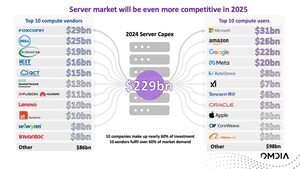LONDON, Nov. 27, 2024 /PRNewswire/ -- Omdia's latest research, Spatial Computing: Cloud and Edge, indicates that the global spatial computing market is estimated to be $4.5 billion in 2024 and will exceed $10 billion in 2029, with a cumulative average growth rate (CAGR) of 18% through wide adoption in major consumer and enterprise use cases.
A term coined in 2003, spatial computing refers to the process involved in integrating digital data with the physical world and all the associated human interactions. Unlike 3D scene rendering, where the simulated world is isolated from the physical world and does not need to include changes in the real-world environment, spatial computing overlays digital data onto the physical world. All interactions with the data can influence the physical world and vice versa. More importantly, spatial computing represents a transformative shift for businesses, allowing users to seamlessly blend the physical and virtual worlds. This innovation is redefining how we interact with data, objects, and one another.
Traditionally, spatial computing is a very computationally intensive process. The emergence of cloud infrastructure enables large amounts of data to be collected, stored, shared, and integrated into various applications. At the same time, the availability of flexible and scalable computing and storage resources encourages enterprises and developers to create large-scale applications that are hosted in the cloud and accessed from different locations. Spatial visual and audio content creation, game development, digital twin, and near real-time simulations are some of the critical use cases that demand immersive user experience by integrating precise geolocation information and motion sensing.
With the advancement of edge compute and storage technology, vendors are determined to integrate spatial computing with various devices. Currently, the most mature applications are extended reality (XR) and robotics. "Google, Microsoft, Apple, Meta, and Qualcomm are among the major technology vendors that aim to bring spatial computing to various edge devices, including smartphones, head-mounted displays, augmented reality glasses, and robotics," comments Lian Jye Su, Chief Analyst at Omdia.
Premium XR devices like Apple Vision Pro have showcased the promise of on-device spatial computing. As a follow-up to its $100 million Snapdragon Metaverse Fund, Qualcomm announced several chipset platforms for XR devices (Snapdragon XR2 Gen 2 and AR1 Gen 1) and robotics (Robotics RB6 Platform). Android application developers are also revitalized with the update of software development kits (SDKs) from Google and Meta.
Nonetheless, the technology remains nascent as the industry continues to see significant technology vendors offer related solutions. "To achieve this growth, Omdia expects spatial computing technology providers to improve chipset efficiency further, embrace domain-specific generative AI for spatial computing, build a vibrant ecosystem, and, most importantly, push for open standards that promote seamless interoperability and integration," concludes Su.
ABOUT OMDIA
Omdia, part of Informa Tech, is a technology research and advisory group. Our deep knowledge of tech markets combined with our actionable insights empower organizations to make smart growth decisions.
Fasiha Khan [email protected]
SOURCE Omdia

WANT YOUR COMPANY'S NEWS FEATURED ON PRNEWSWIRE.COM?
Newsrooms &
Influencers
Digital Media
Outlets
Journalists
Opted In





Share this article